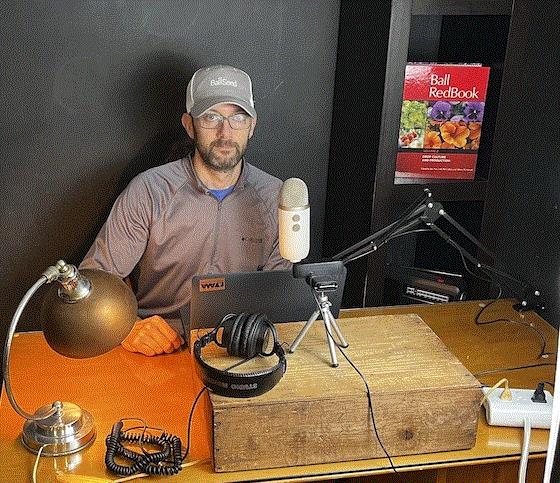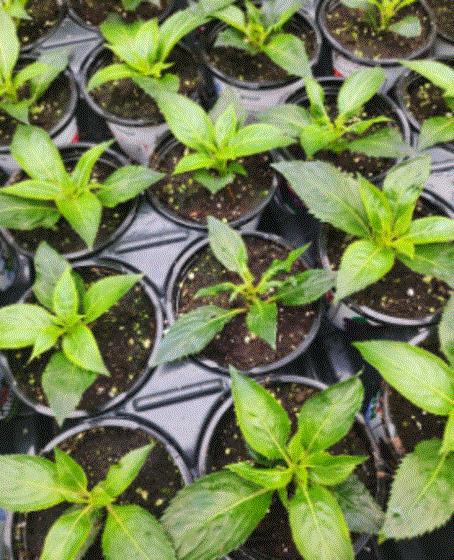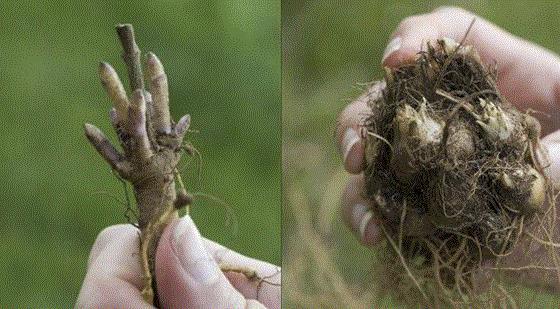Plenty of New Podcasts Available!
I know things are super busy in your greenhouse at the moment, so what better time to catch up on Tech On Demand podcasts via headphones or earbuds while you run around keeping those crops on track? We’ve covered a wide range of topics in the past couple months—from crop nutrition and seed germination to making sense of biocontrol terminology—even filing your taxes!

Here’s a rundown of recent episodes (there are currently 112 in the archive to choose from). Remember, we release a mix of interview-style episodes and audio book-style episodes that run from quick, 10-minute shows to long-form discussions. The goal is to give you everything from bite-sized tips to deep dives into timely and relevant topics.
Discussions:
Spring Prep: Plant Nutrition—I talk with Dr. Josh Henry, a Ball technical service specialist with expertise in plant nutrition and fertility, and he takes us through an early-season checklist that includes water testing, injector calibration and the importance of having an in-house testing toolbox handy. Then he digs deeper into options for fertilizer—macronutrients and micronutrients—and tips for adjusting pH up or down.
Tip Atrophy: Triggers & Solutions—Dr. Will Healy joins me to explain that tip atrophy occurs in a range of different greenhouse crops in every season but is most often experienced with petunia and calibrachoa in the spring and pansy in the fall. It can be pervasive across entire crops or random, making it especially frustrating.
Achieving Uniformity in Canna Production—I am joined again by Dr. Will Healy for a great discussion about the germination process, defining terms and talking about the unique laser drilling technology that allows moisture to penetrate really hard canna seeds. After establishing the importance of proper moisture management and temperature control for tropical crops like canna, he digs deeper into flat filling and seeding best practices.
Achieving Uniformity in Begonia Production—Dr. Will is back again, this time to talk about why you should treat begonias like unrooted cuttings in the period after germination—they’re a monocot, with root clusters instead of a taproot. As a tropical plant, Will reminds us that cold water in germination is not ideal and tempered water should be used. Lighting is also recommended—immediately after trays leave the water tunnel.
Audio Files:
-
Avoiding Crop Contamination—from the February 2024 issue of Inside Grower magazine.
-
Get familiar with In-House Disease Testing—from the February 2024 issue of GrowerTalks magazine.
-
What Does “Compatibility” Mean?—from the February 2024 issue of GrowerTalks magazine.
-
Avoiding Tax Audits—from the June 2023 issue of GrowerTalks magazine.
-
Two Tobamoviruses to Keep an Eye Out For— from the February 2023 issue of GrowerTalks magazine.
All of these episodes AND MORE can be found on SPOTIFY, APPLE PODCASTS and just about any other podcast platform you use. Be sure to subscribe so you never miss an episode ... and if you have a minute to leave a positive review, it will be greatly appreciated!

Nick’s Tip of the Week: Broad Mites on New Guinea Impatiens
Each week, I’ll work with my buddy Nick Flax, a technical services expert at Ball, to share a concern that’s come up during one of his numerous calls with growers across North America. This week, he’s looking at a specific pest on a specific crop to help you quickly tackle the issue if it occurs this year.
PROBLEM: Lots of bedding plants can be infested by broad mites, but there are go-to crops that they tend to gravitate toward before others. A few of the “magnet crops” I see broad mites show up on first include Hiemalis begonias, gerbera daisies, Thunbergia, Torenia, peppers and New Guinea (and interspecific) impatiens (NGIs). It’s good to be on the lookout for these tiny pests, but don’t get tunnel vison and let the actual cause of a problem get out of hand when broad mites aren’t the culprit.

NICK’S TIP: I’ve seen a lot of broad mite look-alike symptoms recently on NGIs, so here are a few ways you can confirm or rule out the presence of broad mites on this crop.
Broad Mite vs. High EC Symptoms
Broad mites prefer to feed on the newest growth. Often, when damage first starts to appear, symptoms will be noticeable on mid to upper canopy leaves. As they multiply, newly hatched mites move toward the growing point and concentrate their feeding near the meristem (shoot tip).
-
Affected foliage often feels hard or brittle to the touch and takes on a bronzish color where feeding damage is most severe. This is caused by a toxin in the mites’ saliva.
-
Damaged leaves tend to curl inward, along the midrib first, and become almost tubular. Eventually, heavily symptomatic leaves also begin to cup downward, and start to look almost like a claw or talon.
-
Affected leaves near the growing point often appear to be shiny, while older leaves typically retain their normal matte coloration.
However, soluble salt accumulation in the growing media and resulting high electrical conductivity (EC) can cause similar symptoms. Key differences for high EC in NGIs include:
-
Damage to the crop is often preceded by notable darkening of the foliage, and mature leaves take on a slightly wavy/waffly pattern.
-
As symptom severity increases, older leaves may twist slightly as waffling intensifies, but they don’t typically become severely distorted.
-
Newer growth becomes stunted and distorted, but leaves don’t cup downward and roll in the characteristic manner that broad mite-damaged foliage does.
-
Affected leaves retain a good amount of flexibility and do not become rigid and brittle to the extent they do when broad mite damage has occurred.
Look For Patterns
Another key indicator for broad mites vs. high EC is the pattern of symptom appearance. Often, if you’ve experienced a broad mite infestation, anything that looks like telltale symptoms of an infestation sets off alarm bells all over your operation. Don’t hit the panic button though! Take a step back and look at the bigger picture:
-
Abiotic factors like high EC will affect a large percentage of your crop, because you apply fertilizer to everything whenever you feed. As such, if symptoms appear on most of your crop (90% or higher) all at once, high substrate EC is more likely the cause.
-
Conversely, if symptoms start to appear in a “hot spot,” the possibility of broad mites is higher. However, be sure to take other location factors into account before you convince yourself that it must be broad mites. For example, if symptoms appear along the edges or corners of a bench, or on plants in the direct path of a unit heater, it’s possible that high EC is still the cause. Increased air flow and quicker dry-down in these areas can encourage salt accumulation, so be sure to leach the media periodically to avoid this.
-
Broad mites often hitchhike on unrooted cuttings (URCs) from offshore farms, so check the plant material source when symptoms appear. If you receive URCs from multiple farms but all your NGIs start to show symptoms at once, high EC is more likely.
-
If URCs from one supplier start to show symptoms while material from other suppliers are fine, quarantine all material from the affected supplier ASAP and scout thoroughly for adult mites and eggs.
-
If a few plants scattered here and there slowly start to show symptoms, the likelihood of a broad mite infestation is much higher.
Management
Broad mite management is tough when an infestation occurs, so diligence and persistence is the key to curb an outbreak. Check out Dr. JC Chong’s tips on broad mite identification and management HERE for more details, but here are a few high points:
-
Scout symptomatic leaves and shoots using high magnification. I recommend at least 40x for folks who know what they are looking for and closer to 100x magnification if you are not familiar with what eggs or the different life stages look like.
-
DO NOT SAVE INFESTED PLANTS! Carefully bag infested plants where they sit on the bench and throw them out ASAP. Also remove plants immediately surrounding them, as mites are likely present even if they do not currently show feeding damage symptoms.
-
Be aggressive with your miticide cleanup efforts and continue to remove symptomatic plants as they appear. Total eradication of a broad mite infestation is like a battle of attrition. If you slip up and give the mites an opportunity to regain a foothold—they will!
-
Keep the pressure on and operate under the assumption that there are likely still some eggs or mites hiding somewhere.
-
Consider implementation of URC or liner dips on incoming material and deploy preventative biocontrols for broad mite-prone crops like NGIs. Several species of predatory mites are very effective at cleanup and outbreak prevention under low pressure.
Be sure to monitor substrate EC regularly in NGI crops. Target a pour-thru value of around 1.3 mS/cm or lower.
-
Mature crops can tolerate an EC of around 1.5 but the risk of high EC damage increases substantially at or above this value—especially if plants dry down hard between irrigations.
-
If the substrate EC value starts to creep up into the danger zone, leach the crop with clear water before you resume fertilizer applications.
If damage occurs, new growth will return to normal once excess salts are leached and substrate EC remains at an appropriate level.

Danziger Launches New Technical Pages
I try to share when breeding companies add significant amounts of digital crop culture that you might want to bookmark for future use. Just this week I heard from Danziger than new TECHNICAL PRODUCT PAGES have been added and enhanced for their annuals and perennials—including their 2025 intros! These pages are now downloadable and include tech specs and culture for more than 90 products. They were designed to take you from start to finish with the crops.

You’ll like the “flipbook” format, and it’s definitely easy to use. Clicking the link above takes you straight to the new technical content, but if you poke around the menu items there are catalogs for annuals, perennials, cut flowers and foliage, as well.
Kudos to Danziger for making all of this info easily available online!
JC On Aphids (not Aphids on JC, thank goodness …)
In his most recent PestTalks e-newsletter, Dr. JC Chong mentioned he’s getting a lot of calls on how to deal with aphids on spring crops, especially in southern climates as spring production picks up. I thought it would be good to share his thoughts in this newsletter as some of you might also be dealing with them at the moment or could be going to battle with these common greenhouse pests in the near future.
Here's what JC had to say:
To me, aphids are one of those pests that could be managed successfully and easily with biological control. There are quite a few biological control agents for aphids, from lacewings to tiny parasitic wasps of many species. Banker plants are adopted by quite a few growers. A grower I worked with reduced his insecticide spray from more than 10 down to four on his spring crop a couple of years ago. His major complaints about the banker plants are the need to dedicate space and labor to grow and maintain the banker plants and to prepare and deploy the banker plants ahead of an aphid outbreak. The last time I checked in, he was considering if he wants to use banker plants again. I hope he does. Click the link HERE if you want additional information on how to set up a banker plant system.

Aphids aren’t difficult to control with insecticides ... well, at least in my experience. The difficulties, particularly in the South, come from the constant invasion of winged aphids into the greenhouses via opened vents and sides. A population can quickly blow up in your greenhouse because of how rapidly the aphids grow (becoming reproductive in a little more than a week) and how many babies they pump out (one hundred in a couple of weeks). So, catching the invasion of aphids with sticky cards and regular inspection is the key to preventing an outbreak.
Which of the insecticides are effective? Can I say all of them? Seriously, I haven’t really tested an insecticide that doesn’t knock back an aphid population. I can spray a solution of diluted dish soap and kill the aphids, even though I won’t get any residual control from the spray. Again, the key is to catch the infestation early and treat them before an outbreak occurs.
One of the major pains of aphid management is residual control of aphids in hanging baskets. Neonicotinoids are the standards for aphid management in hanging baskets, where just one drench can produce a relatively clean crop. They still are if you can and want to use neonicotinoids in your operations. When neonicotinoids were under scrutiny, folks tried and reported good results with other systemic insecticides, such as flupyradifurone (Altus) and spirotetramat (Kontos).
Lots of insecticides are available for foliar application. My go-tos are the chordotonal organ modulators in two IRAC groups—afidopyropen (Ventigra; 9D), flonicamid (Aria; 29), pymetrozine (Endeavor; 9B), and pyrifluquinazon (Rycar; 9B). Obviously, two IRAC groups aren’t enough to build a rotation program, which is essential for aphids. There are other effective options, such as azadirachtin (many trade names; UC), several insect growth regulators, diamides, neonicotinoids, flupyradifurone, spirotetramat, sulfoxaflor, entomopathogenic fungi, horticultural oil and insecticidal soap.
Go HERE for a poster from SePRO (prepared by JC himself) on insecticides available for the management of aphids and other pests.

Bareroot Storage Tips
The Tech On Demand team got a call from a grower this week who’d over-ordered some bareroot material and was wondering how best to store it for a month or so until they have time to pot it up. Here’s the advice they were given.

Photo: Walters Gardens
Bareroot material can be kept in a cooler between 35F and 40F for later planting. However, if you want to do this, the best bet is to get it in cold storage ASAP and keep them in their packaging to minimize desiccation. Here are a couple things to watch for:
Check for signs of new root or shoot growth and bud swelling ASAP. If plants appear to still be dormant and there is no new, tender growth, they can be held as-is in their original packaging.
If there are signs of active growth, you should plant as soon as you are able. If dormancy is broken, they will try to grow right in their packaging. If this occurs, shoots and leaves that develop will be etiolated (pale), very tender and easy to damage. Leaves and shoots like this will either succumb to disease during storage or perform very poorly once they are planted.
Keep in mind, even if these crowns still appear to be dormant now, you should check periodically for signs of active growth and be prepared to plant them ASAP if they break dormancy prematurely.

Finish Line … Dr. Charlie Hall’s ILCA State of the Industry
Dr. Charlie Hall, ag economist and Ellison Chair at Texas A&M University, gave his always-excellent talk on the State of the Industry, this time at the iLandscape show in Schaumburg, Illinois, at the end of January, and GrowerTalks editor Jennifer Zurko was there to cover it. The event, which is put on by the Illinois Landscape Contractors Association (ILCA), always includes lots of educational sessions and a trade show. Here's Jen's report on Charlie's talk:
Charlie spoke to a packed room, and if you’ve heard Charlie’s spiel at Cultivate every year, you know how he’s able to take a subject like economics and boil it down to where we non-numbers-loving people can understand it. Here are a few takeaways from his talk that are different from 2023.
-
Some people still don’t get that the pandemic was a global crisis and that the U.S. isn’t the only country that has suffered from inflation—however, we are the only one that’s bouncing back better and quicker.
-
The stimulus packages that were enacted during the end of the Trump and beginning of the Biden administrations did help the economy … but it also caused inflation, which economists knew would happen. Charlie said, “It takes a while to move the needle.” And since the U.S. economy equals about $26 trillion dollars, it takes a while to make a dent. Says Charlie, “It’s hard to steer a big boat.”
-
There are projections that people will start to pull back on their spending this year, compared to the last few years that started with the pandemic. “But it doesn’t mean people will stop spending money,” he said. “We need to make sure we get a share of that.”
-
The supply chain is officially “back to normal.”
-
The labor market is still strong but weakening. Charlie said that for every job that’s open, there are only 0.7 people available to fill that job. Wages are still going up, but the rate at which they’re going up is going down.
-
The increase of prices paid by growers for inputs has increased a total of 22% since 2020.
-
New home builds are going up again, but sales of existing homes are constrained. Nobody wants to sell their current homes with a 1.7% interest rate to buy another one at 7%, so people are staying put.
-
As mortgage rates go down, the housing market will pick up, and mortgage debt is declining. Charlie doesn’t see the home prices bubble bursting like it did during the Great Recession.
-
Current demographics are favorable for the housing demand in the short run, but there are 11 million fewer people in the prime gardening market. The target age of 44 to 62 years has moved from the Baby Boomers to Generation X, which is a smaller generation population-wise, and the birth rate in general is dropping. This is why legal immigration is good. Productivity + The number of people working = GDP. “It’s not rocket science,” said Charlie.
-
Spending on goods and services have come back together after the pandemic and are now at an inflection point.
Everyone always wants to know Charlie’s prediction on whether there will be a recession, and he always jokes that “economists have predicted 23 of the last 11 recessions.” But seriously, he said that it’s hard to predict because there are many things out of our control, like global affairs (Israel/Gaza, Ukraine/Russia), and the price of oil impacted by what’s happening in Lebanon and Iran.
But all of the indicators on Charlie’s economic dashboard are NOT showing a forthcoming recession.
“There’s nothing preventing you, with regard to the economy, from making money in 2024,” he said. “There are not many headwinds.”
So, the economic outlook overall is good, but Charlie continues to preach that green businesses need to tout the value of their products—especially in a year where consumers will be more careful with their discretionary spending.
“We spend little time talking about the benefits of flowers, plants and trees,” said Charlie. People will pay to enhance the quality of their lives. And what we do is a great social equalizer. The power of plants in green spaces in our lives is dramatic. We are great contributors to society.
“Don’t freak out about the economy just yet. Go out and make hay because there is hay out there.”
Thanks, Charlie! And thanks, Jen!
Talk to you next week!




Please feel free to send your comments, constructive criticism and topic ideas to me at bcalkins@ballhort.com.

Bill Calkins
Editor - Tech On Demand
This email was received by you and 25,969 other fine subscribers!
If you're interested in advertising in Tech On Demand, contact Kim Brown ASAP and she'll hook you up.